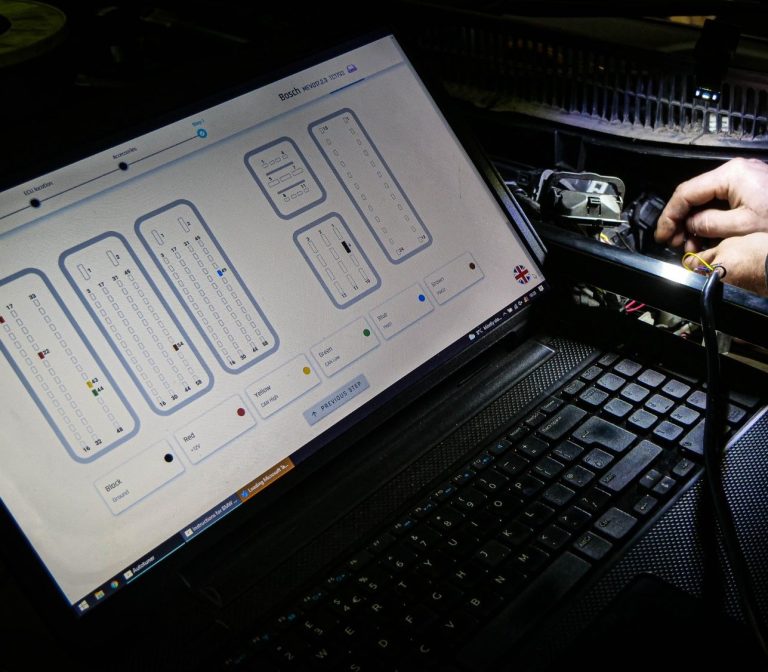ECU Remapping
ECU remapping involves reprogramming the Engine Control Unit (ECU) to improve a vehicle’s performance or fuel efficiency. The ECU controls various aspects of the engine, like fuel injection and ignition timing, but manufacturers often set these parameters conservatively to suit a range of driving conditions globally.
By connecting specialised software to the car’s OBD port, technicians can modify these factory settings, tailoring the ECU to optimise power output, torque, or fuel economy based on the driver’s goals. Performance remaps boost power and responsiveness, while economy remaps focus on improving fuel efficiency. This process should be handled by professionals to ensure safe, reliable results.
Performance
Designed to increase a vehicle’s power and responsiveness, performance remapping enhances parameters like fuel injection and turbo boost, resulting in faster acceleration and a more dynamic drive.
50:50
This balanced approach offers both power and efficiency. It boosts throttle response and mid-range torque for a more engaging drive while maintaining improved fuel economy for regular use.
Economy
Focused on maximising fuel efficiency, economy remapping adjusts the ECU for better fuel consumption, ideal for daily commuting and reducing fuel costs, with a minor boost to torque.


OBD - Bench - Boot
OBD Remapping
OBD remapping is the simplest and most common method, performed through the vehicle’s OBD-II (On-Board Diagnostics) port, usually located under the dashboard. Technicians connect a device to the OBD port, allowing them to read and adjust ECU settings directly. This method is fast and non-intrusive, as it doesn’t require opening the ECU unit itself. However, it’s only available for vehicles where ECU data can be accessed fully through the OBD port—typically, newer or less complex ECU systems.
Bench Remapping
In bench remapping, the ECU must be physically removed from the vehicle and connected to specialised equipment on a workbench. This approach is used when the ECU’s data cannot be accessed through the OBD port, often due to encryption or compatibility issues in certain vehicles. Bench remapping provides full access to the ECU, enabling precise tuning and modification of its settings. While more time-consuming than OBD remapping, it is more versatile and allows for a greater degree of customisation.
Boot Remapping
Boot remapping is the most advanced method and is used when both OBD and bench methods cannot fully access the ECU’s software, often in vehicles with high-level security or complex encryption. In this process, the ECU is removed, and technicians access it directly by opening it to connect with specific points on the circuit board, referred to as “boot” points. This enables a complete read and write of the ECU’s firmware. Boot remapping is intricate and typically used for highly customised tuning but requires expertise, as any mistakes in handling the ECU’s circuitry can cause damage.
We need your consent to load the translations
We use a third-party service to translate the website content that may collect data about your activity. Please review the details in the privacy policy and accept the service to view the translations.